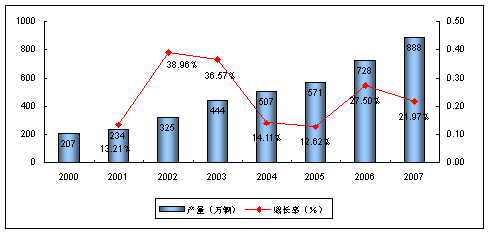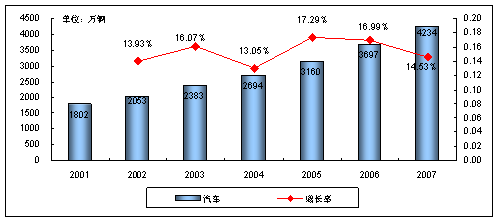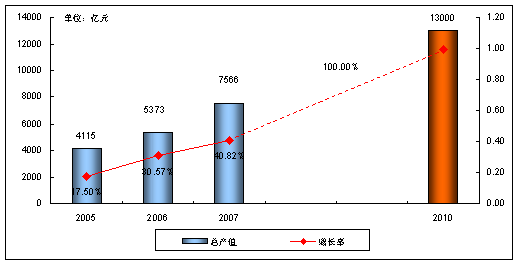I. Introduction to Automotive Filters
The life of a car depends largely on its heart, the life of the engine. Overloading, high-speed driving, bad driving habits of starting and stopping, etc. may all lead to a reduction in the performance and life of the engine. But the greatest harm to engine performance and longevity should be dirt and pollution. They are the engine's number one killer. The filter is the only way to avoid dirt and contamination. Therefore, in a sense, the filter, which is one of the 60 key parts of a car, is the protective car engine.
Since the advent of the engine, people gradually realized from practice that the engine must have a filtering device. If the filter is not installed, the wear of the engine will be unusually fast. In particular, modern high-speed engines wear faster. With the advancement of engine technology, the requirements for filters have become higher and higher. The importance of filters to the performance and life of engines is becoming more and more known. Many automotive engineers believe that one of the main reasons why modern engines have a long life is to have an effective filtration system.
Second, the filter concept defined
The engine system has three types of air, oil, and fuel filters, commonly referred to as "three filters." They are responsible for filtering the media in the intake system, lubrication system, and combustion system of the engine.
The air cleaner is located in the engine air intake system. It is an assembly of one or more clean air filter components. Its main role is to filter out harmful impurities in the air that will enter the cylinder to reduce the early wear of cylinders, pistons, piston rings, valves and valve seats. There are two types of air filters, dry and wet. At present, most automotive engines use a dry-type air filter with low mass, low cost, easy replacement, and high filtration efficiency, and are usually cleaned every 5000 kilometers. When cleaning, remove the filter element and gently tap the end face and blow it from the inside with compressed air to remove dust from the filter element. Do not wash with gasoline or water. Paper filter elements must be replaced every 25,000 km.
The oil filter is located in the engine lubrication system. Its upstream is the oil pump and downstream is the parts that need to be lubricated in the engine. Its role is to filter out the harmful impurities from the oil sump of the oil sump, and use the clean oil to supply the crankshaft, connecting rod, camshaft, supercharger, piston ring, etc., to act as lubrication, cooling, and cleaning. To extend the life of these components, the oil filter can be divided according to the structure of removable, spin-mounted, centrifugal. At present, most car engines use spin-on oil filters. These filters are non-removable disposable filters. When replacing the oil, the oil filter must be replaced at the same time to change the oil and oil filter. The cycle of the device is generally 5,000 kilometers.
Fuel filters include diesel filters, fuel filters, and natural gas filters. Its role is to filter out harmful particles and moisture in the engine's fuel oil system to protect the oil pump nozzle, cylinder liner, piston ring, etc., to reduce wear and avoid clogging. At present, most engines are equipped with disposable non-removable paper filter fuel filters, and the replacement cycle is generally 10,000 kilometers.
Third, the filter industry technical standards
The four new filter industry standards developed in 2007 have been implemented since May 1. The four new standards are “Technical Conditions for Dry Dry Air Filter Assembly for Automobilesâ€, “Technical Conditions for Automotive Diesel Engine Paper Filter Cartridge Diesel Fine Filter Assembly,†“Test Methods for Diesel Fuel Filters for Automobiles,†and “Automobiles. Air filter test method". The “Air Filter Test Method for Automobiles†is a revised version of the corresponding standard for the 1992 edition, and the other three are all new standards.
The new standards are even closer to the automotive industry. The automotive industry, especially the diesel engine industry, is rapidly developing and the requirements for related accessories are getting higher and higher. The filter industry lacks corresponding production and evaluation standards, and some of the existing standards are mostly in the field of agricultural machinery and are not suitable for the automotive sector. The new standard is now set to move closer to the automotive industry. These four new standards have a positive effect on regulating the market and improving the industry's product level. These new standards on the one hand provide reference for filter products used by OEMs, and on the other hand, they can guide filter manufacturers in production.
According to relevant experts, many OEMs are not familiar with all of the filter's knowledge, especially without dedicated test benches and lack of uniform evaluation standards. Many OEMs and filter manufacturers are using their own standards. Some of these standards are simply unreasonable and even jokes. The introduction of new industry standards will help OEMs select higher quality filters. Whether it is a main engine plant or a filter manufacturer, the production and procurement in accordance with the new standards will inevitably help improve the industry level.
Fourth, China's filter industry industry environment
1. China's auto industry maintains rapid development
China's automobile industry started in the 1950s, but in the 30 years before the 1980s, its investment, production, and consumption were all under the strict control of the central plan. The Chinese auto market is also completely free of the world's auto market. The development of the automobile industry is relatively slow. In 1971, the output was only 100,000 vehicles. The policy of reform and opening up in the 1980s provided good conditions for the rapid development of the Chinese automobile industry. In 1992, the annual output of automobiles exceeded 1 million vehicles for the first time. After China's accession to the WTO in 2001, the development of the Chinese automobile industry accelerated significantly. The annual automobile output exceeded the 300, 400 and 5 million units in 2002, 2003 and 2004 respectively. In 2007, the Chinese automobile industry continued to maintain a rapid growth trend. In 2007, the annual automobile output increased by more than 20% to 8.88 million vehicles. It is predicted that in 2008 China's auto production will exceed 10 million vehicles, an increase of about 15%.
The Change of China's Automobile Production during 2000-2007

(Source: Huicong Deng Baishi Research According to the China Association of Automobile Manufacturers
After the rapid growth of China's automobile production and sales in recent years, China’s auto ownership has also been growing at a high rate. China's huge amount of car ownership provides a broad auto aftermarket repair and maintenance market for auto parts companies in China. In 2001, the number of China's civilian vehicles was 18.02 million. In 2002, the number of civilian vehicles increased to 20.53 million. In 2007, the number of civilian vehicles increased to 42.34 million, an increase of 15%. According to the Ministry of Public Security Administration of Communications, as of the end of June 2008, the number of motor vehicles in the country was 166 million, of which the number of cars held was 6,12,212,000, an increase of 4,254,400 compared with 2007, an increase of 7.47%; motorcycles 88,866.4 thousand vehicles, compared with 2007, an increase of 1,769,800 vehicles, an increase of 2.03%. In the next few years, the number of vehicles and vehicles in China will continue to maintain a rapid growth, with an average annual growth rate of more than 10%.
The Growth of China's Civil Car Ownership from 2001 to 2007

(Source: Huicong Deng Baishi Research According to the China Association of Automobile Manufacturers
2. China's auto parts industry is in a critical period of development
Since 2000, the proportion of China's auto parts industry in the entire automotive industry has increased year by year. In 2005, the scale of the domestic auto parts market was approximately 580 billion yuan, of which the domestic complete vehicle market was approximately 365 billion yuan, the aftermarket was 95 billion yuan, and the export value was 120 billion yuan. In 2005, the auto parts industry achieved a total industrial output value of 411.5 billion yuan, accounting for 34.8% of the total output value of the automotive industry; sales income of 403.5 billion yuan, accounting for 33.9% of the total sales revenue of the auto industry (1.1896 billion yuan); total profit of 23.6 billion Yuan, which accounted for 44.9% of the total profit of the auto industry (52.62 billion yuan). In the first 11 months of 2007, the profit of the automobile industry was as high as 130.9 billion yuan, far higher than the average of 59.8 billion yuan in China's 39 industrial sectors. The profit growth of the automobile industry also contributed to a large proportion of parts and components; The efficiency of the auto parts industry in the month increased by 69%, which was higher than the efficiency gain of the entire vehicle industry. The total profit of the auto parts industry was only 7 billion yuan worse than that of the whole vehicle, which reached 87% of the entire vehicle industry.
After nearly 10 years of development, China's manufacturing level has improved significantly. Some companies have the ability to independently develop and supply systems, and have reached the level of supporting complete vehicle parts systems for commercial vehicles and supporting general parts systems for cars. However, the proportion of the parts and components industry in the automotive industry is 35% to 36%, which is still lower than the international level of 60% to 70%. Changes in the demand for the parts and components industry will have a major role in the industrial and equipment industries such as steel, non-ferrous metals, rubber, plastics, textiles, leather, glass, electronics, etc., as well as oil, finance and other industries. According to statistics, there are more than 34 industries in the automobile industry, and the spread effect has reached 3-5.
In 2005, 2006, and 2007, the total output value of auto parts in China exceeded 400 billion yuan, 500 billion yuan, and 700 billion yuan respectively. In 2006 and 2007, the growth rate exceeded 30% and 40% respectively. It can be seen that the development of China's auto parts industry has maintained a rapid growth in recent years. We expect that the scale of the national spare parts market will reach 1.3 trillion yuan in 2010.
Total Output Value of China's Auto Parts Industry from 2005 to 2010

(Source: Huicong Deng Baishi Research According to the China Association of Automobile Manufacturers
Although China's auto parts industry has made great progress, but the days of local parts and components companies are not easy: On the one hand, raw material prices continue to rise; on the other hand, the entire vehicle price war started in 2004, making a lot of vehicles The enterprises transferred some of the cost pressures to parts and components companies; in addition, the strong competition of multinational giants has made many local parts and components companies difficult to survive. Statistics in 2005 showed that China’s parts and components industry’s first-ever profit decline in 10 years.
In order to become bigger and stronger, China’s auto parts industry must comprehensively enhance its competitiveness. First, it must strive to build an international auto parts procurement center; secondly, it must independently innovate and master core technologies; again, it should raise the level of specialization and scale; finally, Integrate resources, improve management, and promote information construction.
Wire Book Rack,Metal Wire Book Rack,Metal Book Rack
Store Wire Shelving Co., Ltd. , http://www.gdwireshelving.com